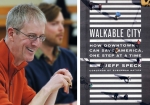Broadly speaking, a sustainable action meets the triple bottom line of people, place and profit. Applied to urban governance, sustainability means nurturing human capital and protecting environmental assets while developing economic opportunities. A sustainable action is an action that improves the aspects of one of these three pillars without hurting the others.
Protecting environmental assets while facilitating economic development is easy. Through smart growth principles, green building policies and environmental conservation plans, local governments already posses enough policy options to accommodate and encourage sustainable development.
Addressing sustainability and human equity issues however is vastly more difficult than addressing environmental and economic concerns. Affordable housing, working wages and general livability involve notions of normative rights. How cities should tackle these equity issues and integrate them into their sustainability framework is a vexing problem.
Because it is such a wicked problem, it may benefit cities to consider equity issues as human capital issues. What if, by educating, involving and tasking citizens with opportunities to demonstrate leadership on complex urban issues, cities might increase human capital? This could be accomplished by providing opportunities for civic engagement, professional development and personal networking.
Education would require local governments to proactively reach out and inform their citizens about relevant local planning problems (eg. transportation, land use and equity issues). Involvement can occur through traditional means (city hall meetings, open houses, public outreach) but increasingly, it is better achieved through outreach via government websites and social media (Facebook, Twitter, Instagram, etc).
These are strong starts, but they do nothing to increase human capital if citizens are seated at the kids table in the halls of public decision-making. To truly nurture human capital, cities need to task their citizens with providing leadership on complex urban issues.
Tasking citizens with leadership can be done in a multitude of ways. One approach is to create volunteer, public sub-committees to strategize solutions to urban planning problems. Another approach is to promulgate city-sanctioned, policy proposals which could be drafted by coordinated nonprofits such as smart growth, green building and other concerned sustainable development groups. A third approach might even come in the form of an academic challenge to higher education institutions, whereby academics and emerging professionals at research universities could engage in urban-design studios to draft solutions to wicked planning problems.
Tasking citizens with taking leadership on planning issues is a win-win-win opportunity:
- The process gives citizens an authentic sense of ownership in decision-making;
- It removes the burden from city officials of being required to develop solutions to complex/contentious urban planning problems in isolation; and
- It provides a vehicle for relationship (network) building amongst individuals from different backgrounds.
These forms of public-public partnerships is what builds human capital. This is how cities can support and brace the third pillar of sustainability.
Now, with that said…sustainability is ultimately bunk.
Sustainability is the wrong word to use in terms of smart growth, environmental conversation and human development. It’s the wrong word because sustainability implies little or no entropy: a sustainable action is self-sustaining, is efficient, stable and generates little to no waste. And that’s not how cities function.
Cities are highly organized economic and cultural systems that naturally encourage an efficient allocation of resources. But those resources are not distributed equally amongst all urban residents. It’s not economically or physically possible for everyone to live in the North End and it’s not efficient for everyone to bike to work; some people live outside of the downtown core and those citizens need roads and vehicles to get them into downtown. Roads require infrastructure spending (which may be unsustainable/inefficient) and vehicles generate pollution. As such, urban living is not presently fully sustainable.
Moreover, as development-pressures increase post great recession, cities will continue growing and public officials and planners will do their best to guide that growth with the imperfect information and time-constrained deadlines they’re afforded. This is not sustainability–we can’t achieve perfect stability when today’s sustainably planned urban development lacks efficiency technologies that may not yet even be invented. Remember how auto-centric suburbia was once pitched as the panacea for crowded, unhealthy inner cities? Consider Detroit and how well the hangover of suburban build-out is now treating them.
Where does this leave us? With Resilience.
 Resilience means adaptability. Resilience means admitting that we don’t have all the answers, but we’re going to do our best, and we’ll be ready to correct course in the future if mother nature, human nature, or economic realities change the rules on us. Resilience means we’re going to employ the best practices we’re already sure of, while continuing to experiment with new ideas. Resilience is the evolution of sustainability thinking.
Resilience means adaptability. Resilience means admitting that we don’t have all the answers, but we’re going to do our best, and we’ll be ready to correct course in the future if mother nature, human nature, or economic realities change the rules on us. Resilience means we’re going to employ the best practices we’re already sure of, while continuing to experiment with new ideas. Resilience is the evolution of sustainability thinking.
And Resilience is catching on. More than 45 mayors around the USA, including Nancy Cheney of Moscow, have already signed the Resilient Communities for American Challenge. And support for resiliency is growing. Today, July 17th, the Rockefeller Foundation announced the official opening of registration for their 100 Resilient Cities Challenge. The $100 million challenge, open to cities around the world, will provide funding for 100 cities to staff a position of Chief Resilience Officer who will oversee development of technical plans and innovative infrastructure options to nurture and create resilient city planning. Sustainability is old hat, resiliency is unifying movement for progressive cities of the 21st century.


 Noted sustainability planner and walkability guru
Noted sustainability planner and walkability guru